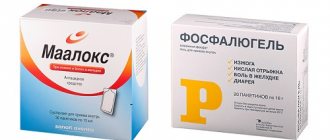Instructions
Bifidumbacterin and Lactobacterin are drugs belonging to the group of probiotics. They are prescribed to adults and children for the treatment of various pathologies associated with disorders of the microflora of organs, as well as for the prevention of dysbacteriosis. Both medicines contain strains of beneficial bacteria. However, they cannot be called analogues, since they contain microorganisms of different types.
Bifidumbacterin and Lactobacterin are drugs belonging to the group of probiotics.
Bifidumbacterin and Lactobacterin: what is the difference
Bifidumbacterin contains live bifidobacteria, Lactobacterin contains live lactobacilli. Both types of microorganisms live in the human body, participate in digestion and perform a protective function: they inhibit the growth of pathogenic microbes and promote the removal of their waste products.
Lactobacillus differs from bifidobacterium in that it lives not only in the intestines, but in the vagina of a healthy woman.
Therefore, drugs based on it are often used in gynecological practice.
Differences
Probiotics are microorganisms that help not only in creating, but also in maintaining an optimal level of microflora. As a rule, such drugs are produced as bacteria, in some cases as yeast.
Modern pharmacology is constantly evolving, and therefore an increasing number of products can satisfy the growing demand. Probiotics can be used to help improve microflora in women. The use of specific drugs for thrush can lead to vaginal dysbiosis. Antibiotics cannot identify the cells that need to be destroyed, and therefore the effect is directed in both positive and negative directions. As practice shows, beneficial microorganisms die first, and only then pathogenic ones.
The main difference between the above-described drugs is that Lactobacterin is based on lactobacilli, and Bifidumbacterin is based on bifidobacteria. Both types are necessary for a woman to function normally. According to studies, the proportion of bifidobacteria and lactobacilli is 100:1.
Based on the information received, bifidumbacterin is most often prescribed for thrush, since the need for bifidobacteria is much higher. If one of the patient’s indicators begins to decrease, then dysbacteriosis is diagnosed. It can be aggravated due to the negative impact of pathogenic flora on the body - yeast, fungi, staphylococci, etc.
If you regularly take Lactobacterin, you can increase the secretion of lactic acid, which will speed up the process of destroying pathogenic flora. Bifidumbacterin suppositories help increase the number of bifidobacteria, which begin to grow rapidly, displacing pathogenic flora from the body. In addition, it is possible to accelerate the removal of accumulated toxins and bacterial waste products.
If the patient does not know how to use the presented drugs at the same time, you can purchase a complex probiotic: Linex, Laktovit-Forte, etc. Patients should learn about one simple trick: bifidobacteria have a mild laxative effect, and lactobacilli strengthen. As soon as constipation appears, you need to resort to the help of lactobacterin, if diarrhea occurs - bifidumbacterin.
It is impossible to give a definite answer regarding the use of the above-described means. They belong to the same group and perform the same functions, and therefore can be used both during therapy and for the prevention of a number of diseases.
Indications for use
The instructions for use of Bifidumbacterin indicate that it is used for the correction of microbiocenosis in the preoperative and postoperative period, as well as for the treatment and prevention of:
- mastitis in nursing women;
- intestinal dysbiosis;
- acute intestinal infections;
- chronic constipation and diarrhea.
Lactobacterin is prescribed for dysbacteriosis that has developed during antibiotic therapy, intestinal infections, colitis, pancreatitis, and pathologies of the female genital area.
Lactobacterin is prescribed for dysbacteriosis that has developed during antibiotic therapy, intestinal infections, colitis, pancreatitis, and pathologies of the female genital area.
Recommendations
Before starting a course of probiotics, you should seek help from your doctor. You cannot be guided only by the colorful wrapper; you need to pay attention to the component composition, which is selected in accordance with the current clinical picture. You can see the number of living bacteria in the composition. Only on the basis of this information can we talk about the benefits of the product.
In addition, the shelf life of such drugs deserves special attention. If the technology has been broken, then no benefit can be expected. The patient must pay attention to all the details. This is the only way to achieve the fastest possible results. If you notice the first symptoms, you should immediately seek help from your doctor. The sooner the targeted effect begins, the faster the negative consequences of the disease can be prevented.
Special instructions for the use of Bifidumbacterin and Lactobacterin
Patients with lactose intolerance and allergies should take Lactobacterin under the supervision of a physician.
It is not advisable to take Bifidumbacterin orally along with antibacterial drugs.
Oral forms of the drug in powder form cannot be diluted with water at temperatures above +40°C, as this can lead to the death of bacteria.
Pregnancy and lactation
Probiotics can be used during pregnancy and breastfeeding as prescribed by a doctor.
Childhood
Preparations in the form of suppositories are contraindicated in children under 3 years of age. Dosage forms for oral administration (powder sachets or capsules) are prescribed by the pediatrician taking into account the weight of the small patient.
Elderly age
Taking probiotics in increased dosages in elderly patients is not advisable. The optimal dose is calculated by the doctor based on the indications.
Together or separately?
If the attending physician prescribes two drugs at the same time, they must be taken.
With a willful refusal, you can only achieve a worsening of the current clinical picture. Bifidumbacterin and Lactobacterin suppositories should be used at different time intervals. For example, suppositories - at night, and another drug - in the morning.
This scheme will allow beneficial bacteria to securely gain a foothold in the body, preventing the growth of pathogenic flora. Here are a few simple tips:
- Lactobacterin should be taken in the first half of the day, since the need for such a probiotic is somewhat lower.
- Bifidobacteria can be consumed with plant foods and dairy products. The best way to take it is with clean water.
- If a patient is lactose intolerant, it is better to avoid using such drugs.
Before purchasing the drug, you should consult with your doctor, since the price range can be very different. Probiotics have no contraindications, but attention should be paid to individual lactose intolerance.
Bifidobacteria, which form the basis of bifidumbacterin, help accelerate the production of B vitamins (B1, B3, B6, B12), K, D. Lactobacilli help cope with the influx of pathogenic flora, protecting against problems in the future. That is why it is so important to use drugs in combination, achieving mutual complementarity.
If a person does not have any health problems, then probiotics are not needed. Following a proper diet can lead to a complete supply of all macro- and microelements. Naturally fermented products are considered the most useful, and therefore no one has denied their importance in the treatment of vaginal problems.
The best form of release is vaginal suppositories and capsules. Suppositories allow you to deliver the necessary set of beneficial microorganisms to the affected area. The capsule turns out to be no less effective, but before you start using it, you need to study in detail the annotation that comes with the complex. The main task is to prevent premature dissolution of capsules. They should have increased resistance to an alkaline environment and not dissolve for several hours after administration.
You can add a multivitamin complex and pectin to the medications you take. They help prevent the rapid removal of beneficial bacteria from the body.
Characteristics of Lactobacterin
Contains beneficial bacteria that take part in the normal functioning of the body, ensuring timely cleansing of the intestines, preventing constipation and allergic manifestations. The drug stimulates metabolic processes and prevents the occurrence of intestinal diseases. Effective in the fight against pathogenic microbes: staphylococci, shigella, E. coli.
Main active ingredient: live lactobacilli.
Additional components: milk, gelatin, sucrose.
The main active ingredient of Lactobacterin is live lactobacilli.
The drug is prescribed for the following diseases and conditions:
- bowel dysfunction;
- after acute intestinal infections;
- somatic diseases that are accompanied by dysbacteriosis;
- for complex treatment of weakened children suffering from diseases of various etiologies accompanied by dysbacteriosis;
- colitis of various origins in a chronic form, including nonspecific ulcerative colitis;
- for the purpose of sanitizing the genital tract during prenatal preparation of pregnant women and in cases of inflammatory diseases of the genitals.
Intestinal dysfunction is one of the indications for the use of Lactobacterin.
The drug can be used to treat children after consultation with a doctor.
The product can be used during pregnancy and breastfeeding.
Contraindications:
- individual intolerance to components;
- vulvovaginal candidiasis;
- lack of isomaltose and sucrose.
For intestinal diseases, the drug is taken orally an hour before meals, washed down with milk. The daily dose and duration of the therapeutic course are determined by the doctor.
For intestinal diseases, the drug is taken orally an hour before meals, washed down with milk.
In obstetric and gynecological practice, the drug is used intravaginally.
Which is better – Bifidumbacterin or Lactobacterin
Lactobacterin and bifidumbacterin are not substitutes for one or the other; they are two complementary components that make up the normal intestinal microflora. Therefore, it is not correct to compare which one is better. If there is a complete destruction of the microflora balance, then the use of one of these drugs may simply not help, since there will not be enough other types of beneficial microorganisms in the intestines.
Lactobacterin differs from bifidumbacterin only by the presence of another type of fermented milk bacteria. The main differences are lactobacilli and bifidobacteria. The only thing worth noting is that there is a certain balance in the intestines between these substances. There are 100 times more bifidobacteria in healthy microflora compared to lactobacilli, which suggests that the need for this component during the period of illness can increase significantly compared to the first component. In any case, using these medications together will be more beneficial than taking them separately.
How to take Lactobacterin and Bifidumbacterin together
If you are prescribed to take lactobacilli and bifidumbacteria at the same time, then you should not ignore this prescription yourself, otherwise dysbiosis may worsen, since the imbalance between intestinal substances will only intensify. It is best to eat these components of the intestinal microflora at different times of the day, for example, lactobacilli in the morning, and bifidobacteria in the evening. There are several important nuances that will allow you to get the maximum benefit from using these drugs so that dysbiosis goes away as quickly as possible:
- Lactobacterin can be taken earlier as bifidumbacterin, since the human body requires less of it than the second component
- During the course of treatment, it is better to avoid drinking various teas or coffee; you should start drinking plain water, or even better, fermented milk food, it will help the body better absorb these medications
- These medications are contraindicated in patients with lactose intolerance.
- If the patient bought a complex drug, then the course of treatment will be more expensive, so in order to save money it is better to purchase separate drugs
- It is better for children to take bifidobacteria, and for adults - lactobacilli.











